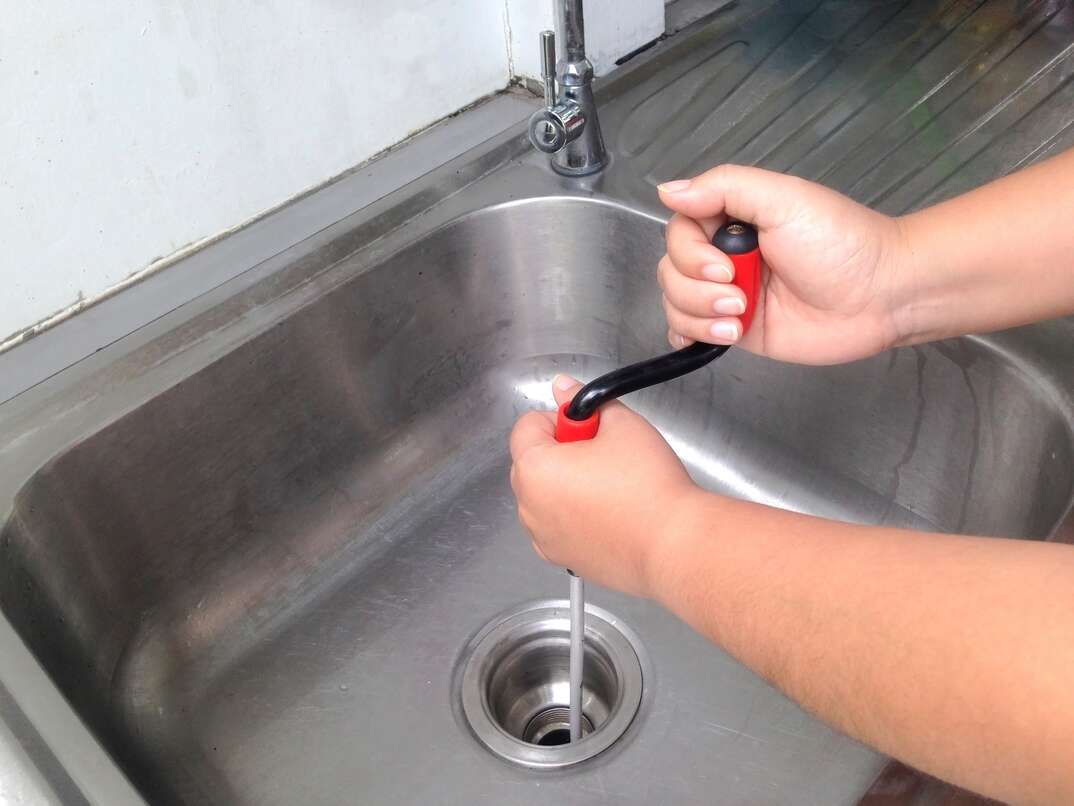The content further down involving 7 Ways To Fix A Slow-Draining Sink Before You Call A Plumber is totally intriguing. Read it for your own benefit and figure out what you think of it.

Introduction
We have actually all been there: You're brushing your teeth or cleaning your hands, and you observe the water merging in the sink. Rather than quickly swirling down the drain, it sticks around, turning your once-refreshing morning routine into a mini swamp scene. A slow-draining sink isn't simply aggravating; it's frequently an indication of larger pipes problems prowling below the surface area. Fortunately is that most slow-draining sinks can be fixed with a little expertise, a couple of basic devices, and some persistence. Ready to tackle this job head-on? Allow's roll up our sleeves and dive right in.
Recognizing the Root Causes Of a Slow-Draining Sink
Before you start poking around in your pipelines, it assists to know what might be triggering the stagnation. Recognizing the root cause makes it much easier to choose the best repair.
Tools and Products You'll Need
The right tools make all the distinction. The good news is, you will not require a completely stocked plumber's van to get the job done.
Step-by-Step Overview to Repairing a Slow-Draining Sink
Now, allow's enter the nitty-gritty. This detailed process will certainly lead you via straightforward strategies to recover your sink's drainage.
Action 1: Eliminate and Tidy the Stopper
Usually, the stopper (that little plug you push down to obstruct water) is the initial wrongdoer. Remove it carefully and clean off any hair or substance caught around its base. Wash it thoroughly before putting it back in position.
Action 2: Make Use Of a Bettor to Remove Debris
Got that bettor prepared? Setting it over the drain and give it a few firm pumps. The idea is to produce suction that can loosen any type of clog. If you see bits of debris drifting up, you're on the right track.
Action 3: Attempt a Drain Snake or Wire Wall Mount
If the bettor doesn't work, it's time to draw out the drainpipe snake. Delicately feed it right into the drain and twist as you go. You may feel some resistance-- that's most likely the clog. Keep twisting and drawing up until you eliminate the obstruction. If you don't have a drain snake, a straightened wire wall mount can work in a pinch.
Step 4: Apply a Do It Yourself Drainpipe Cleaner
A natural cleaner made from cooking soft drink and vinegar can break down recurring crud. Put half a mug of baking soda right into the drainpipe, adhered to by half a cup of vinegar. Allow it fizz for about 15 mins, then flush with warm water. This chemical reaction often does wonders for minor clogs.
Tip 5: Reassemble and Evaluate the Sink
Placed everything back with each other and run the faucet. Does the water currently swirl away at a commendable rate? If yes, provide yourself a pat on the back. If not, do not anguish-- there are still a couple of more tricks up your sleeve.
Vital Tools for Do It Yourself Fixes
A plunger is your go-to starting factor. A little, sink-sized plunger creates suction that can dislodge minor obstructions. For even more relentless clogs, a drainpipe serpent (often called a plumbing technician's auger) works marvels. A pair of gloves, a flashlight, and perhaps a pair of safety goggles are additionally useful.
Suggested Cleaning Solutions
Light dish soap and warm water can aid break down greasy accumulation. A mix of cooking soda and vinegar is a tried and true natural remedy, and enzymatic cleaners provide an even more environmentally friendly strategy. Maintain chemical drain cleansers as a last option, as they can be rough on your pipes.
Typical Culprits Behind Slow Water Drainage
So, what's obstructing things up? Typically, it's a mixture of everyday debris-- think hair, soap scum, toothpaste residue, and leftover food fragments. Gradually, these little bits accumulate and cling to the pipe walls, progressively tightening the flow and making it harder for water to go through. In many cases, mineral deposits from hard water can likewise add to the gunk, developing the best storm for stubborn clogs.
When is it Time to Act?
If you discover the water draining slower than typical, it's a great idea to step in earlier rather than later on. Waiting as well long might lead to complete clogs, undesirable smells, and even pipe damage. If the water takes greater than a couple of secs to remove after turning off the faucet, consider it a red flag and prepare yourself to put on your do it yourself hat.
Safety And Security First: Safety Measures and Prep work
Prior to you launch into unclogging mode, think of security. You're handling possibly filthy water and debris, so slip on a pair of gloves. If you're using chemical cleansers, make certain the space is well-ventilated and comply with the instructions on the tag.
Safety Gear and Work Space Configuration
Lay down some old towels or rags around the sink area to catch dashes. Remove any type of things that might get in your way, like soap dispensers or tooth brush owners. Make certain you have excellent lighting-- order a flashlight if needed.
Alternative Approaches for Stubborn Clogs
Not all clogs are produced equivalent. If your sink still refuses to work together, consider these alternative remedies.
Sodium Bicarbonate and Vinegar Technique
We already discussed this, yet it's worth noting once again. This mild, environment-friendly technique is more secure than chemical cleansers and usually rather reliable.
Chemical Drainpipe Cleaners
Enzyme-based cleansers utilize natural microorganisms to digest raw material. They're an outstanding selection if you're looking to stay clear of extreme chemicals. Just keep in mind, they might take a bit longer to function their magic.
Chemical Drain Cleansers: Advantages And Disadvantages
Chemical cleaners can blow up through challenging clogs quick, but they're not without downsides. They can produce heat and fumes, damage pipes if used excessively, and present ecological dangers. Utilize them moderately, and constantly comply with the instructions meticulously.
Safety Nets to Maintain Your Sink Flowing
Avoidance is the very best cure. By adopting a couple of straightforward behaviors, you can maintain your sink from reducing in the first place.
Normal Cleansing Routines
Clean down the sink basin and component area regularly. Get rid of hair or food particles prior to they have an opportunity to wash down the drain.
Staying Clear Of Dangerous Materials Away
Think twice before unloading coffee grounds, grease, or fibrous veggie scraps down the sink. These culprits hold on to pipeline wall surfaces, producing clogs with time.
Routine Maintenance Checks
Set up a fast month-to-month evaluation. Run warm water with the sink for a few minutes, paying attention to the flow. If it seems slow-moving, act quickly prior to it ends up being a full-blown obstruction.
When to Call a Specialist Plumbing Technician
Occasionally, regardless of how hard you attempt, that block simply will not budge. That's when it's time to bring in the pros.
Indications That Indicate a Much More Serious Concern
If your sink drains gradually in spite of numerous attempts, or if you discover water supporting in other fixtures (like your shower or commode), you might have a more significant pipes problem lurking deeper in the system.
Stabilizing DIY Efforts with Specialist Help
While DIY can conserve you cash and provide a feeling of achievement, there's no embarassment in calling an expert. A specialist plumbing technician can assess your whole pipes configuration, guaranteeing there's no underlying damage or long-lasting trouble that could cost you much more later on.
Comparing Costs and Long-Term Solutions
Prior to making a decision, take into consideration the big picture. An economical, quick fix could solve the problem temporarily, but buying an extra long-term service can save you cash and tension in the future.
Evaluating the Expenses of Do It Yourself vs. Specialist Repairs
Do it yourself fixes frequently cost bit greater than the price of a plunger or a container of cooking soda. Professional services, on the other hand, featured a price however may avoid repetitive issues and pricey repair services later on.
Purchasing Top Quality Fixtures and Upgrades
If your sink's layout adds to constant obstructions, it might be worth upgrading to higher-quality fixtures or altering the plumbing layout. Consider this an investment in your house's capability and convenience.
Conclusion
A slow-draining sink can feel like a small inflammation, however it's typically an indication that your plumbing requires a little tender loving care. By comprehending the root causes, employing the right devices and techniques, and committing to straightforward preventive measures, you can maintain your sink flowing openly. And when all else fails, never wait to employ a professional-- your home's pipes is worth the financial investment in care and upkeep.
How to Fix a Slow Sink Drain: 7 Methods
Clean the Stopper
Remove and clean the stopper. A pop-up drain stopper and the sloped shape of the sink are designed for optimal debris and build-up collection. If you do not have a drain zip tool, or the tool cannot clear out all debris, another option is to remove and clean the pop-up.
Most pop-ups are held in place with a nut attached to the drain just under the sink. To remove the pop-up, reach behind the drain pipe under the sink to find the pop-up nut. Once the nut is removed, the pop-up can be removed from the sink drain, cleaned, and reinstalled.
Use Homemade Drain Cleaner
Employ a DIY solution. A homemade drain cleaner can clean the drain pipes after the larger debris has been pulled out. The chemical reaction caused by combining two common and inexpensive household products, like vinegar and baking soda, can help break down the mucky build-up on the inside of the drain pipes and get the drain flowing freely again.
Pour 1/2 cup of baking soda down a slow-draining sink. Follow it with 1/2 cup of vinegar. Let the mixture rest for a few minutes. Rinse the solution with boiling water to clear the clog. Clear the Sink Overflow
Clean the overflow. The sink overflow is another place where debris and build-up can be collected over time. If a sink drains slowly and cleaning the drain doesn't work, try to clean the overflow.
The overflow opening is intended to divert water into the drain if it accidentally rises too high in the sink. It also allows air into the drain when the sink is filled with water, helping it drain faster.
Use a Plunger
Give it a good plunging. A plunger can be used on a slow sink drain; it does not have to be reserved for a complete drain stoppage. Plunging can help loosen and dislodge hair and debris in the pipe. To ensure the plunging motion is effective, cover the sink overflow with a rag or some duct tape to make a seal before plunging.
Use a Snake
Try a snake. If straightforward methods aren't working, consider getting a drain auger or snake to clear a bathroom or kitchen sink drain. A drain snake is a thin, flexible metal cable that can be wound or unwound on a reel. It has a drill or corkscrew-like end that can penetrate clogs, dislodge them, and pull them out.
Clean the P-Trap
Unclog the P-trap. If all other methods fail to clear a stubborn clog, the last step before calling a professional is removing and cleaning the P-trap or the drain pipe under the sink with a bend shaped like a "P" rotated 90 degrees, clockwise to the right. That U-shaped bend in the pipe is a top spot for gunk, like hair, food, grease, and debris, to build up and get clogged.
Once you remove the drain pipe, you need a bucket to catch residue, water, and debris. You might need Channellock pliers or a wrench if you can't unscrew the slip nuts by hand.
Tips to Prevent Slow-Draining Sinks
Sinks are only for water, soap, or toothpaste: Use toothpaste correctly and fully lather it in the mouth; do not let globs of toothpaste go undissolved down the drain. Stop hair and debris from going down the drain: Refrain from brushing your hair over the sink, or get a fine mesh drain hair catch for the drain hole. If shaving your face over the sink, wipe away the stubble with a washcloth, and rinse the washcloth and razor in a wash basin. Empty the water into the toilet or tub drain. Clean the sink stopper regularly: Remove the stopper and clean out any hair and dirt that may have lodged in the drain. Flush the sink with hot water regularly: Hot water will help move or loosen hardened or sludgy toothpaste, grease, mineral deposits, and hair. Some experts suggest using boiling water; however, beware since boiling water might melt PVC or crack porcelain.

I found that post on when doing a search on the web. Do you know about someone else who is fascinated with the subject? Please feel free to share it. Thank you so much for going through it.
Top Article
 Bradley Pierce Then & Now!
Bradley Pierce Then & Now! Lark Voorhies Then & Now!
Lark Voorhies Then & Now! Soleil Moon Frye Then & Now!
Soleil Moon Frye Then & Now! Jaclyn Smith Then & Now!
Jaclyn Smith Then & Now! Megyn Kelly Then & Now!
Megyn Kelly Then & Now!